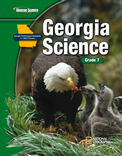1 A) capillaries B) veins C) alveoli D) nephrons 2 A) sugar B) water C) carbon dioxide D) oxygen 3 A) They are reabsorbed and returned to the blood. B) They leave through the digestive system. C) They are converted into urine. D) They are exhaled from the lungs. 4 A) lungs B) liver C) heart D) bladder 5 A) lung cancer B) emphysema C) asthma D) chronic bronchitis 6 A) respiratory B) urinary C) circulatory D) excretory 7 A) less oxygen enters the capillaries B) an imbalance of salts C) few if any problems would occur D) an increase of carbon dioxide in the blood 8 A) kidney B) hypothalamus C) nephron D) bladder 9 A) polluted air B) coal dust C) asbestos D) cigarette smoke 10 A) sugar B) salt C) urine D) blood 11 A) fluid levels B) waste gases C) undigested material D) oxygen 12 A) emphysema B) bronchitis C) respiration D) abdominal thrusts 13 A) food or liquid from entering your airway B) air from entering your lungs C) carbon dioxide from entering your lungs D) dust and bacteria from entering your airway 14 A) nostril B) larynx C) pharynx D) epiglottis 15 A) carbon dioxide B) oxygen C) food D) water vapor 16 A) produce sticky mucus B) moisten the air taken in C) trap dust from the air D) sweep away mucus and trapped materials 17 A) emphysema B) chronic bronchitis C) asthma D) common cold 18 A) increase lung pressure B) produce bile C) remove wastes from blood D) pump blood through the heart 19 A) lungs, bronchi, trachea, larynx, pharynx B) larynx, pharynx, bronchi, trachea, lungs C) pharynx, larynx, trachea, bronchi, lungs D) larynx, trachea, pharynx, bronchi, lungs 20 A) pharynx and lungs B) bronchi and bronchiles C) nostrils and lungs D) alveoli and capillaries
















